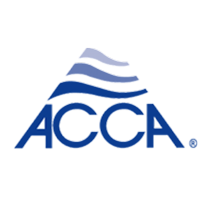
You shouldn’t be forced to compromise on comfort or drain your wallet to keep your residence at a refreshing temp during summer weather.
But what is the ideal temperature, exactly? We go over recommendations from energy experts so you can determine the best temperature for your family.
Here’s what we advise for the most energy-efficient setting for air conditioning in Fort Lauderdale.
Recommended Thermostat Settings for Summer
Most families find using the thermostat at 72-73 degrees is ideal. However, if there’s a huge difference between your inside and outdoor warmth, your electrical expenses will be bigger.
This is our advice based on the U.S. Department of Energy (DOE) and ENERGY STAR®.
While at home: 78 degrees. While that appears too high, there are methods you can keep your residence cool without having the air conditioner on all the time.
Keeping windows and window treatments shut during the day keeps cold air where it should be—within your home. Some window solutions, such as honeycomb shades or plantation shutters, are made to give extra insulation and enhanced energy savings.
If you have ceiling fans in your residence, the DOE says you can increase thermostat temperatures about 4 degrees warmer without sacrificing comfort. That’s due to the fact they cool by a windchill effect. As they cool people, not rooms, switch them off when you exit a room.
If 78 degrees still feels too hot at first glance, try running a trial for a week or so. Start by upping your temperature to 78 degrees while you’re at your house. Then, progressively decrease it while following the ideas above. You could be surprised at how refreshed you feel at a warmer temperature setting.
While away: 88 degrees. There’s no reason to keep the air conditioner on all day while your residence is vacant. Moving the temperature 7–10 degrees higher can save you as much as 5–15% on your electrical costs, according to the DOE.
When you come home, don’t be tempted to put your thermostat below 78 to cool your residence faster. This isn’t effective and typically produces a bigger AC cost.
A programmable thermostat is a helpful method to keep your temperature under control, but you have to set programs. If you don’t use programs, you run the risk of forgetting to raise the set temperature when you go.
If you need a hassle-free resolution, think about installing a smart thermostat. This thermostat works with with your phone, so it knows when you’re at your residence and when you’re away. Then it automatically changes temperature settings for the biggest savings. How much exactly? Typically $180 each year on heating and cooling, according to ENERGY STAR.
Another benefit of having a smart thermostat? You can use your phone to watch and adjust temperature settings from nearly anywhere.
While sleeping: Around 70 degrees. While ENERGY STAR recommends 82 degrees, that may be unpleasant for most families. Most people sleep better when their sleeping space is chilly, so that’s why the National Sleep Foundation recommends 60–67 degrees. But that may be too cool, due to your PJ and blanket preference.
We advise running an equivalent test over a week, setting your temperature higher and slowly turning it down to locate the right temp for your family. On cool nights, you could find keeping windows open at night and running a ceiling fan is a preferable idea than running the air conditioning.
More Approaches to Use Less Energy During Hot Weather
There are added methods you can spend less money on AC bills throughout warm weather.
- Buy an energy-efficient AC system. Central air conditioners only are effective for about 12–15 years and become less efficient as they become older. An updated air conditioner can keep your house more comfortable while keeping cooling costs low.
- Schedule annual air conditioner maintenance. Regular air conditioner maintenance keeps your equipment working smoothly and could help it operate more efficiently. It might also help prolong its life span, since it enables technicians to find seemingly insignificant issues before they create a major meltdown.
- Replace air filters regularly. Read manufacturer instructions for changing your air filter. A dusty filter can lead to your system short cycling, or run too frequently, and increase your electricity.
- Measure attic insulation levels. Nearly 90% of residences in the USA don’t have adequate insulation, according to the Insulation Institute. Many southern climates should have 13–14” of attic insulation, while northern climates require 16–18”.
- Have your ductwork examined. Ductwork that has come apart over time can let conditioned air into your attic, walls or crawl space. This can result in major comfort troubles in your residence, such as hot and cold spots.
- Seal cracks, doors and windows. Keep hot air where it belongs by sealing cracks. You can also caulk or weather strip doors to seal more conditioned air inside.
Use Less Energy During Hot Weather with Solar Air Inc.
If you want to conserve more energy this summer, our Solar Air Inc. experts can help. Give us a call at 954-320-7398 or contact us online for more details about our energy-saving cooling solutions.



